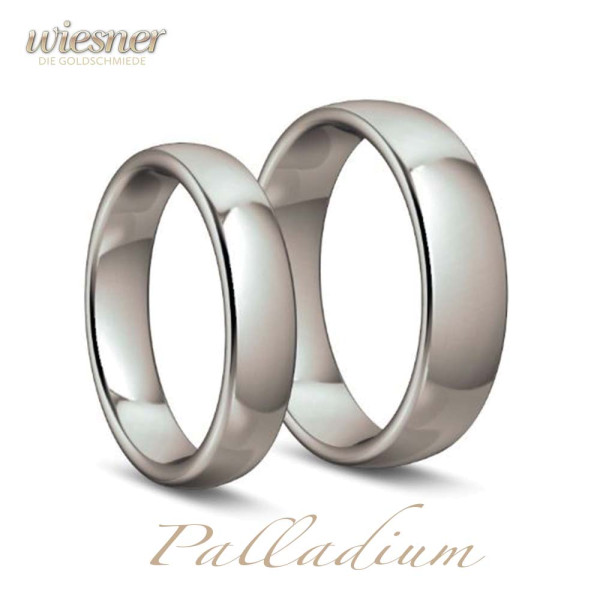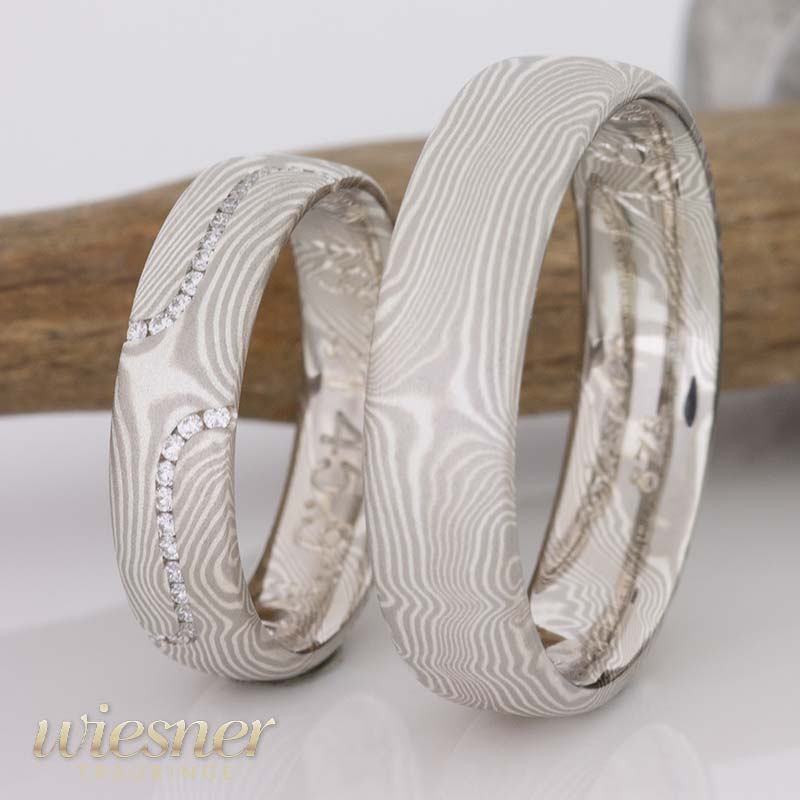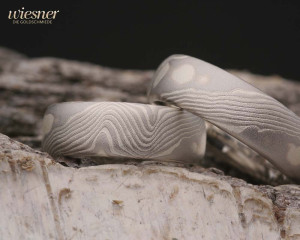Historical facts about palladium:
discovered in 1803 by William Hyde Wollaston, he named palladium after the asteroid Pallas.
He found it in South African platinum ore in samples obtained by dissolving it in aqua regia. Metallic palladium and alloys containing palladium come from the Urals, North and South America, Ethiopia and Australia. However, they have been exploited there, but are still extracted from nickel and copper ores. in contrast to silver, for example, palladium does not react with oxygen, i.e. it does not tarnish. If palladium is cold-formed, for example in the manufacture of Mokume Gane wedding rings palladium is much more reactive than the related element platinum, but still belongs to the precious metals. It dissolves in nitric acid. It dissolves slowly in hydrochloric acid with the addition of air. The precious metal character of palladium is comparable to that of silver, a neighboring element in the periodic table. It is the more noble metal in many acids. In hydrochloric acid, however, it is the less noble metal.
What is palladium actually?
Palladium is a chemical element with the symbol Pd and atomic number 46. It belongs to the platinum metals and is used in the jewelry and electronics industries as well as in automotive catalysis.
How is palladium extracted
Palladium is extracted from nickel and copper ores using a combination of pyrometallurgical and hydrometallurgical processes. The first step is to smelt and refine the ore to separate the palladium. It is then extracted in a pure form.
What special properties does palladium have
Palladium has the following special properties:
-
Low density: palladium is the sixth densest metal and has a lower density than platinum.
-
High corrosion resistance: It is resistant to corrosion and oxidation, which makes it ideal for applications in the electronics and jewelry industry.
-
Catalytic properties: Palladium is an excellent catalyst and is used in automotive catalysis and petrochemicals.
-
Good electrical conductivity: It has good electrical conductivity and can be used as a conductor in electronic devices.
-
Good thermal conductivity: Palladium also has good thermal conductivity, which makes it suitable for applications in high temperatures.
What role does palladium play in the jewelry industry
In the jewelry industry, palladium plays an important role due to its following properties:
-
Hypoallergenic: It is hypoallergenic and is therefore suitable for people with nickel allergies who may be allergic to other jewelry metals such as gold or white gold.
-
Bright appearance: Palladium has a bright, white appearance that is comparable to platinum.
-
Tough: It is robust and corrosion resistant, making it ideal for use in jewelry such as rings, necklaces and bracelets.
-
Easy to work with: It is easy to work with and can therefore be molded into different shapes and designs.
Example of the Use of palladium in contrasting wedding rings, together with Silver.
Isn't palladium mainly used for jewelry alloys such as white gold?
Yes, that is true. Palladium is often used for jewelry alloys such as white gold. It is combined with other metals such as gold, nickel or copper to create an alloy with specific properties. The addition of palladium, for example, improves the corrosion resistance and the bright appearance of the alloy. White gold jewelry alloyed with palladium often has better durability and a bright, white appearance similar to platinum.



